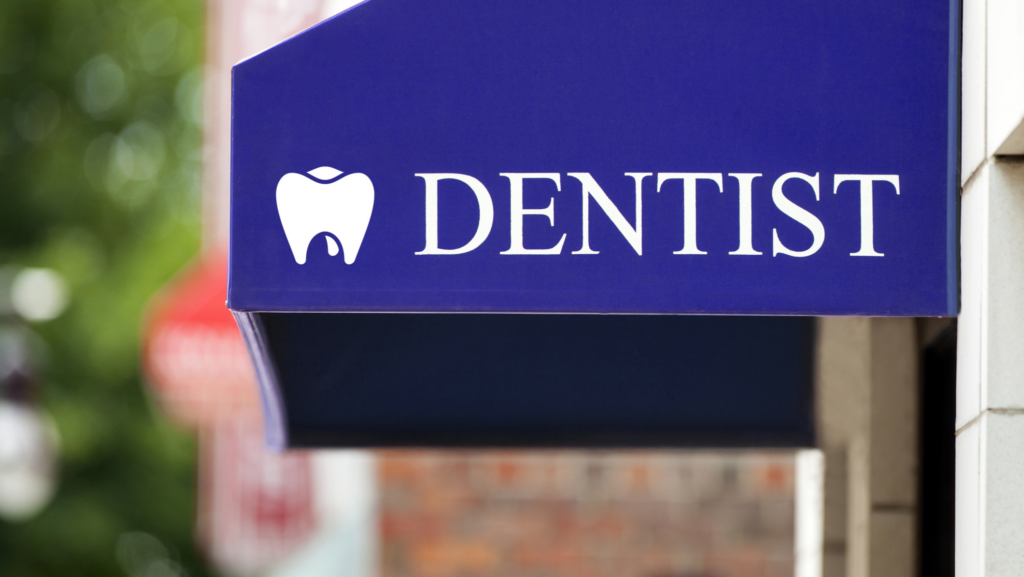
As a dental lawyer/practice seller, I’ve written extensively over the years about the legality and enforceability of non-compete and non-solicit clauses in associate agreements and purchase and sale agreements.
Non-competition clauses generally try to prohibit associates from setting up shop (directly or indirectly with anyone else) within a certain geographic distance of the principal’s practice both during the associateship and for a period of time thereafter. Non-solicitation clauses typically try to restrict the associate from soliciting patients to seek treatment or staff to work elsewhere.
The validity and enforceability of these agreements depends primarily on whether the agreement has been entered into properly (without duress or undue influence, etc.), whether the principal has a proprietary interest that needs protecting, how clearly worded and reasonable the restrictions are, and the context of the relationship between associate and principal.
Ontario courts have found that, absent exceptional circumstances, non-compete clauses are generally unenforceable in purely principal-associate relationships (particularly when a non-solicit would have sufficed) but may be enforceable where the associate sold their practice to the principal/purchaser and then remained on to assist with the transition.
So, what happens when there is no written associate agreement in place between the principal and associate? Can the principal prevent the associate from leaving and setting up close by and taking and patients and staff with them? Well, that’s exactly what happened in the recent case of Coscarella Dentistry Professional Corporation v. Harvey, 2025 ONCA 118.
Just the facts, please!
Until 2018, Dr. Clifford Harvey associated as an independent contractor with Dr. Franco Coscarella with no written agreement. Dr. Harvey (the associate) provided services at Dr. Franco’s (the principal) two (2) practice facilities (collectively, the “Facilities”) and took fifty percent (50%) of his billings. The dentists also agreed to service each other’s patients in emergency circumstances if the patient’s own dentist wasn’t available.
Dr. Franco sold his practices to his son in 2018.
It was at this point that Dr. Harvey decided to move his dental practice to a location across the street from one of the Facilities. He accessed and took photos of electronic files for patients that he had treated in the previous two (2) years. He consulted with the RCDSO and sent those patients letters, announcing that he was moving his practice to a “newly constructed and equipped office” and added that “I will be offering the same range of dental services as I currently do.” He destroyed the photographs after extracting the contact information.
Just before he relocated, five (5) employees of the Facilities resigned and, effective January 2019, started working for Dr. Harvey in his clinic. Dr. Harvey eventually got the patient charts from the Facilities through patient authorizations.
Dr. Franco and his son (collectively, the “Principal”) sued Dr. Harvey and his dentistry professional corporation for appropriating confidential information, breaching their fiduciary obligation for misusing confidential information, and for improperly soliciting the Principal’s patients and employees.
The trial decision and the appeal
As explained below, the Principal lost at trial and on appeal and was ordered to pay $40k in costs to Dr. Harvey.
Improperly appropriating confidential information? No.
The trial judge, Justice Andra Pollak, found that the business relationship “does not result in any confidentiality attaching to [Dr. Harvey’s] patient records.” Justice Pollak found that Dr. Harvey required access to his patient’s records to comply with his professional obligation to maintain complete records of each patient’s dental care and also to notify his patients of the change in location of his practice. She noted that Facilities agreed to maintain those patient records as part of the associateship relationship.
Breach of fiduciary duty? No.
Justice Pollak found that no such fiduciary relationship existed here between Dr. Harvey and the Principal. Dr. Harvey’s ability to access patient records didn’t amount to exercising some discretion or power to affect the Principal’s legal or practical interests or make the Principal peculiarly vulnerable to Dr. Harvey. And since the patient information was not confidential, Dr. Harvey had not breached any fiduciary duty to the Principal by allegedly “abusing confidential information.”
Breach of good faith? No.
The trial judge rejected the Principal’s argument that Dr. Harvey had not performed his contractual duties in good faith, honestly and reasonably, and not capriciously or arbitrarily. Justice Pollak held that there were NO contractual duties on Dr. Harvey relating to accessing patient information or soliciting patients, so these so-called contractual “good faith” obligations didn’t exist.
Improperly interfering with the facilities’ goodwill? No.
Justice Pollak rejected the Principal’s argument that Dr. Harvey had wrongfully interfered with Facilities’ “good will.” She stated that this was an unconvincing attempt by the Principal to claim ownership interests in dental patients, which isn’t legally recognized.
In Bacher v. Obar, [1989], O.J. No. 1392 (affirmed by the Ontario Court of Appeal in [1993] O.J. No. 3578), a case with similar facts, the Court wrote that: “Patients have a right to choose their dentist. They are not property to be bought and sold like inventory. Each dentist had the right to provide service to anyone who requested it.” And on the issue of patient records, the Court in that case held that Dr. Obar (the associate) was entitled to obtain “the records of patients he had treated who continued to require his services” and that “Dr. Obar was entitled to inform his patients of his new location.”
Illegal solicitation? No.
The Principal’s allegations that Dr. Harvey had illegally solicited patients were dismissed on the basis that there was no contractual obligation preventing him from soliciting his own patients or notifying them of his new location by sending them letters. Justice Pollak also rejected the Principal’s argument that there are “implied contractual restrictions prohibiting the solicitation of patients.” She also found no evidence that Dr. Harvey had solicited employees.
Implied non-solicitation based on regulatory laws? No. Finally, the Principal argued that regulatory laws imply the existence of a non-solicitation on Dr. Harvey. Section 6(c) of the Professional Misconduct guidelines O. Reg. 853/93 (made under the Dentistry Act, 1991, S.O. 1991, c. 24) states that, when an associate leaves, they shall “not solicit or cause or permit the solicitation of the principal member’s patients. This does not include sending an announcement announcing the commencement or change in location of the associated member’s … practice to patients treated by the associated member … , provided that the announcement contains only information that is reasonably necessary to enable a patient to determine the location and nature of the practice of the associated member …”
Further, Section 47 of those guidelines states that the following is an act of professional misconduct: “Contacting or communicating with, or causing or permitting any person to contact or communicate with, potential patients, either in person or by telephone, for the purpose of soliciting patients.”
But Justice Pollak rejected these arguments because these regulatory restrictions don’t govern private contractual relationships; rather they exist as part of the RCDSO’s exclusive jurisdiction to regulate professional misconduct. And, in any event, the wording seems to only prohibit solicitation by Dr. Harvey of the Principal’s patients (but not Dr. Harvey’s own patients).
Conclusion
This court case could have been avoided with a carefully drafted and properly entered into associate agreement. Considering selling? Make sure that you have associate agreements in place that include clear and reasonable non-solicitation provisions of patients and staff, obligations concerning the creation/use/ownership of patient records, and mechanisms to address the associate’s departure (e.g. costs associating with duplicating patient records and radiographs, etc.).
Importantly, the RCDSO reminds dentists in its Practice Advisory on the Release and Transfer of Patient Records that: “The contract should not, however, provide any terms which would in any way prejudice the future treatment of patients, restrict patients’ right to choose the dentist of their choice, or limit the access of the patient to their dental records.”
P.S. some associate agreements go even further when it comes to an associate’s departure—specifically prohibiting them from treating patients and/or even requiring the associate to pay a so-called “liquidated damages” or “genuine pre-estimate of damages” amount if they do solicit patients or staff. Whether these types of clauses are legal and enforceable will need to be fleshed out in a future article.
About the author:

Michael Carabash, BA, LLB, JD, MBA, CDPM is a founding partner of DMC LLP, Canada’s largest dental-only law firm that helps dentists sell and buy practices in Ontario. Michael leads DMC’s annual Caribbean dental mission trips that see hundreds of North American volunteers provide free dental services to thousands of locals in Grenada, St. Lucia, Jamaica, Turks & Caicos, and Bahamas. Michael can be reached at michael@dentistlawyers.ca or 647.680.9530.











